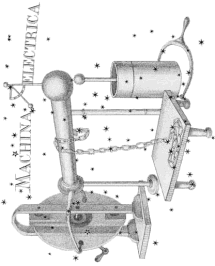Paper is now available for download at:
http://vixra.org/abs/1106.0053
CI.
Tuesday, June 28, 2011
Friday, February 4, 2011
Nuts and bolts
It has been an interesting start of the year for 2011 with some recent items worth mentioning:
Marc Millis of the Tau Zero Foundation posted two papers related to interstellar flight:
Marc Millis of the Tau Zero Foundation posted two papers related to interstellar flight:
Progress in revolutionary Propulsion Physics: summarises the current state of where we stand towards a solution? for "timely interstellar flight - to reach other habitable worlds within a human lifespan". There are currently many options available to reach other stars using known physics. Most would take many decades just to reach our neighbour stars and none of them can get us to destinations beyond many light-years away in a timely, human lifespan timeframe. The paper uses many references from the first recent textbook devoted to this area of research and is worth every dollar: Frontiers of Propulsion Science. I like Figure 1 in the paper which graphically shows the many areas of Physics and concepts that need further research grouped by the key barriers to practical interstellar flight as stated in the paper: Non-propellant propulsion, faster than light travel and energy breakthroughs.
Second paper by Marc: Energy, incessant obsolescence, and the first interstellar missions: there's a review here. Regarding the "incessant obsolescence postulate: No matter when an interstellar probe is launched, a subsequent probe will reach the destination sooner and with more modern equipment": better launch as soon as one has the capabilities to do so because the opportunity may not present itself again due to unforseen circumstances in the future or "societal retardation" ie unforseen catastrophies or less energy production. The implicit motivations for interstellar flight, Table 6 in the paper is interesting, apart from the obvious scientific benefits from the mission and safeguarding humanity's long term survival, I liked another reason that Marc mentions in his talk to pursue interstellar flight: it gives nations something to conquer peacefully and together rather than concentrating on conquering each other on Earth.
Second paper by Marc: Energy, incessant obsolescence, and the first interstellar missions: there's a review here. Regarding the "incessant obsolescence postulate: No matter when an interstellar probe is launched, a subsequent probe will reach the destination sooner and with more modern equipment": better launch as soon as one has the capabilities to do so because the opportunity may not present itself again due to unforseen circumstances in the future or "societal retardation" ie unforseen catastrophies or less energy production. The implicit motivations for interstellar flight, Table 6 in the paper is interesting, apart from the obvious scientific benefits from the mission and safeguarding humanity's long term survival, I liked another reason that Marc mentions in his talk to pursue interstellar flight: it gives nations something to conquer peacefully and together rather than concentrating on conquering each other on Earth.
Significant results released by the Kepler space telescope shows possible candidates for other Earth like planets. From the NASA press release:
Also checkout APOD, Centauri Dreams, this and this."The fact that we’ve found so many planet candidates in such a tiny fraction of the sky suggests there are countless planets orbiting stars like our sun in our galaxy," said Borucki. "Kepler can find only a small fraction of the planets around the stars it looks at because the orbits aren’t aligned properly. If you account for those two factors, our results indicate there must be millions of planets orbiting the stars that surround our sun."
Got in the mail a few days ago: Advanced Propulsion Systems and Technologies, Today to 2020. Another major problem to practical interstellar flight is getting the expected large amounts of hardware out of Earth's gravity well into orbit without using chemical rockets. Space elevators have been proposed (which seems only viable if ultra high strength carbon nanotube cables can be commercially fabricated in the required lengths). A more elegant solution? from Space Drive Physics is worth looking into (see Marc's first paper for an introduction, Chapter 3 Prerequisites for Space Drive Science and Chapter 12 Thrusting against the Quantum Vacuum in Frontiers of Propulsion Science). Anyway should be an interesting read.
CI.
 |
| Fremantle Harbour, Western Australia. |
 |
| Dampier Harbour, Western Australia. |
Subscribe to:
Posts (Atom)














































